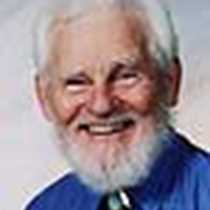Columbia River Gorge/Wallula Gap & Beyond
Smithsonian Associates and Johns Hopkins University alumni joined Lindblad Expeditions and National Geographic travelers in the wake of Lewis and Clark to begin exploring the expedition’s route through Idaho, Oregon, and Washington. A few are up at dawn to seek bighorn sheep on the south side of the Columbia but have no luck; still it’s worth the early effort to see the sunrise upriver. After breakfast we gathered on the dew-wet deck as the sun began to warm us.
We’ve passed through two dams and locks overnight: Bonneville and The Dalles. We negotiate John Day Dam with its guillotine-gated lock by mid-morning. In dry eastern Washington and Oregon all day, we see Mt. Hood behind us for hours in bright sunlight and revel in the flood-carved basaltic landscape surrounding us. The view of Mount Hood from Umitilla Lake offers a typical example. Trees are absent but for a few yellowing cottonwoods and fiery-red sumac shrubs; in this area Lewis and Clark had a difficult time finding enough firewood for cooking
Retired University of Montana history professor Harry Fritz lectures the group in the morning; John Hopkins history professor Ronald Walters, in the afternoon. Each man helped participants understand the Lewis and Clark expedition in slightly different ways. They answered questions and outlined their views about the expedition to further increase understanding.
With waterfowl migration well under way, we saw few birds except Canada geese, cormorants, western grebes, various gulls and ducks, a lone great blue heron, and a trio of raptors (osprey, northern harrier, and kestrel). We passed Hat Rock during wine tasting while we sampled smoked seafood. We left Oregon at Wallula Gap as we dined, then viewed exotic landscapes, some of which we’ll see tomorrow.
Smithsonian Associates and Johns Hopkins University alumni joined Lindblad Expeditions and National Geographic travelers in the wake of Lewis and Clark to begin exploring the expedition’s route through Idaho, Oregon, and Washington. A few are up at dawn to seek bighorn sheep on the south side of the Columbia but have no luck; still it’s worth the early effort to see the sunrise upriver. After breakfast we gathered on the dew-wet deck as the sun began to warm us.
We’ve passed through two dams and locks overnight: Bonneville and The Dalles. We negotiate John Day Dam with its guillotine-gated lock by mid-morning. In dry eastern Washington and Oregon all day, we see Mt. Hood behind us for hours in bright sunlight and revel in the flood-carved basaltic landscape surrounding us. The view of Mount Hood from Umitilla Lake offers a typical example. Trees are absent but for a few yellowing cottonwoods and fiery-red sumac shrubs; in this area Lewis and Clark had a difficult time finding enough firewood for cooking
Retired University of Montana history professor Harry Fritz lectures the group in the morning; John Hopkins history professor Ronald Walters, in the afternoon. Each man helped participants understand the Lewis and Clark expedition in slightly different ways. They answered questions and outlined their views about the expedition to further increase understanding.
With waterfowl migration well under way, we saw few birds except Canada geese, cormorants, western grebes, various gulls and ducks, a lone great blue heron, and a trio of raptors (osprey, northern harrier, and kestrel). We passed Hat Rock during wine tasting while we sampled smoked seafood. We left Oregon at Wallula Gap as we dined, then viewed exotic landscapes, some of which we’ll see tomorrow.



